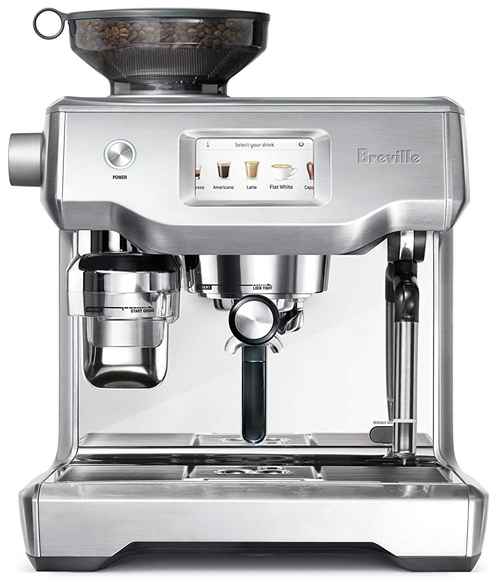Decaf Latte Recipe [+Tips]
Note: This page contains affiliate links.
As an Amazon Associate, I earn from qualifying purchases when you click on the link, but you are not charged extra.
Ah, the humble latte-creamy, comforting, and downright addictive. But what if you love the ritual and flavor of coffee without the jitters or the caffeine buzz? Enter the decaf latte: your new best friend for those late-night cravings or afternoons when you want to stay chill but still indulge in that luscious coffee experience.
- Old World Christmas Beans: Tastes like the holidays in every cup — discover the cozy magic of Old World Christmas Beans before the season slips away.
- Kirkland Sumatra French Roast : Dark, bold, and wildly smooth—why Kirkland’s Sumatra French Roast is the best-kept secret of serious coffee drinkers.
- Hot Fudge Whole Bean Coffee : What happens when dessert meets coffee? Meet the decadent whole bean that tastes like hot fudge—but better.
- Aroma Ridge Guatemala Antigua Medium Roast : From the highlands of Guatemala to your morning mug—this rich, balanced roast is waking up coffee lovers everywhere.
- Juan Valdez Cumbre Colombian Coffee : Crafted by Colombia’s most iconic coffee legend—why Cumbre is a must-try for fans of bold, authentic flavor.
Think of a decaf latte as the perfect marriage between smooth espresso and steamed milk, minus the caffeine kick. It’s a gentle hug in a cup, warming your soul without racing your heart. Whether you’re winding down after a long day or just craving a cozy beverage, this recipe will show you how to craft a barista-quality decaf latte right in your own kitchen.
You don’t need fancy equipment or endless ingredients-just a few essentials and a little love. Ready? Let’s get into the delicious details!
- 1 Ingredients For Decaf Latte Recipe
- 2 How To Make Decaf Latte?
- 3 Expert Tips
- 4 Recipe Variations
- 5 Final Words
- 6 FAQs
- 6.1 What Ingredients Do I Need To Make A Decaf Latte At Home?
- 6.2 Can I Use Decaf Instant Coffee For A Decaf Latte?
- 6.3 How Do I Froth Milk Without A Frother For A Decaf Latte?
- 6.4 What Kind Of Decaf Coffee Is Best For A Latte?
- 6.5 Is A Decaf Latte Completely Caffeine-free?
- 6.6 Can I Make A Decaf Iced Latte Using The Same Recipe?
- 6.7 What Milk Alternatives Work Well In A Decaf Latte?
- 6.8 Can I Add Flavorings To My Decaf Latte?
- 6.9 How Do I Make A Decaf Latte Without An Espresso Machine?
- 6.10 Is A Decaf Latte Suitable For Children Or Pregnant Women?
Ingredients For Decaf Latte Recipe
Every great latte starts with great ingredients, and the beauty of a decaf latte is how simple yet flavorful it can be. Here’s your must-have lineup:
-
Decaffeinated Espresso Or Strong Decaf Coffee
- The star of the show! You want freshly brewed decaf espresso for that authentic taste. If you don’t have an espresso machine, a strong brew from a French press or Aeropress works beautifully.
-
Milk Of Your Choice (about 8 Oz Per Serving)
- Whole milk gives you that classic creamy texture. But hey, almond, oat, soy, or coconut milk? Totally valid and delicious alternatives! Each one adds its own unique twist to your latte.
-
Sweetener (optional)
- Sugar, honey, maple syrup, agave, or even flavored syrups-whatever floats your boat. A little sweetness can elevate your latte to café-level indulgence.
-
Vanilla Extract Or Cinnamon (optional)
- These add subtle warmth and complexity. Vanilla is a crowd favorite, while cinnamon gives you a cozy spice kick.
-
Foam Enhancer (optional)
- If you want extra frothy milk, consider adding a pinch of powdered milk or a barista blend plant milk, designed specifically for foam.
How To Make Decaf Latte?
Making a decaf latte isn’t rocket science, but a little technique goes a long way. Here’s your step-by-step guide to latte perfection:
-
Brew Your Decaf Espresso Or Strong Coffee
- Use about 1 to 2 shots (1-2 oz) of espresso, or a similar amount of strong brewed coffee if you’re improvising. Fresh is best-always freshly ground and brewed.
-
Heat Your Milk
- Pour about 8 ounces of your chosen milk into a small saucepan or milk frother. Heat gently over medium-low heat-don’t let it boil! You want it warm and steamy, around 150°F (65°C).
-
Froth Your Milk
- Use a milk frother, French press, or even a whisk to aerate the milk. Frothy, creamy foam is the signature of a great latte, so don’t rush this step.
-
Pour The Espresso Into Your Favorite Mug
- A wide ceramic cup works great to appreciate the aroma and texture.
-
Add Sweetener Or Flavorings (optional)
- Stir in your chosen sweetener or vanilla extract at this stage.
-
Slowly Pour The Steamed Milk Over The Espresso
- Hold back the foam with a spoon initially, then gently spoon the foam on top for that classic latte look.
-
Top With A Dash Of Cinnamon Or Cocoa Powder If You Like
- Adds flair and a bit of extra flavor.
Expert Tips
Ready to elevate your decaf latte game? Here’s what the pros want you to know:
-
Use Fresh, Quality Decaf Beans
- Not all decaf coffee is created equal. Look for freshly roasted decaf beans (Arabica is usually best) to get that rich, full-bodied flavor.
-
Don’t Overheat The Milk
- Scalding milk kills its sweetness and can make your latte taste flat or burnt. Keep it warm and velvety.
-
Froth With Technique
- When frothing, aim for small bubbles for smooth, creamy foam rather than big airy bubbles that collapse quickly.
-
Experiment With Milk Types
- Oat milk, for example, froths well and adds a natural sweetness. Almond milk can be thinner, so you might want to blend it with a bit of coconut milk for better texture.
-
Preheat Your Mug
- Pour hot water into your cup before brewing to keep your latte warm longer.
-
Practice Latte Art (optional, But Fun!)
- Pouring steamed milk slowly and steadily can create beautiful patterns on your latte, making it feel like a true coffee shop treat.
Recipe Variations
One of the joys of the decaf latte is how customizable it is. Here are some tasty spins to try:
-
Mocha Decaf Latte
- Add a tablespoon of cocoa powder or chocolate syrup to your espresso before adding milk. Chocolate and coffee? A match made in heaven.
-
Spiced Chai Decaf Latte
- Brew decaf chai tea with your espresso or replace espresso altogether with strong chai, then steam milk and add cinnamon and nutmeg.
-
Vanilla Almond Decaf Latte
- Use almond milk and add a splash of vanilla syrup or extract for a nutty, sweet flavor.
-
Iced Decaf Latte
- Brew espresso, cool it, pour over ice, then add cold milk. Perfect for summer afternoons or when you want a refreshing pick-me-up.
-
Turmeric Golden Decaf Latte
- Mix turmeric, cinnamon, and ginger into steamed milk and combine with espresso for a health-boosting, flavorful twist.
Final Words
There’s something truly magical about crafting your own decaf latte at home. It’s a ritual, a moment of self-care, and a way to enjoy the complex flavors of coffee without caffeine’s effects. Plus, it’s a canvas-you can customize it endlessly to match your taste, mood, and even dietary needs.
Whether you’re a lifelong coffee lover looking to cut back on caffeine, a nighttime sipper, or just someone who enjoys a creamy warm beverage, this decaf latte recipe will quickly become your go-to. The rich aroma, the smooth texture, and the gentle sweetness all work together to soothe your senses.
And hey, it’s fun to make! Pouring that velvety milk foam, experimenting with flavors, and maybe even mastering a little latte art-these are the small pleasures that turn a simple drink into a delightful experience.
FAQs
What Ingredients Do I Need To Make A Decaf Latte At Home?
To make a decaf latte, you’ll need decaffeinated coffee or espresso, milk (dairy or plant-based), and optional sweeteners or flavorings such as vanilla extract or syrups. A milk frother or steam wand is helpful for frothing the milk.
Can I Use Decaf Instant Coffee For A Decaf Latte?
Yes, you can use decaf instant coffee, although it may not have the same rich flavor as brewed decaf espresso. Dissolve 1 to 2 teaspoons of decaf instant coffee in hot water, then add steamed milk to create your latte.
How Do I Froth Milk Without A Frother For A Decaf Latte?
You can froth milk by shaking it in a tightly sealed jar, whisking vigorously by hand, using a blender, or heating and frothing with a French press. Heat the milk before frothing for best results.
What Kind Of Decaf Coffee Is Best For A Latte?
Medium to dark roast decaf espresso or decaf coffee with rich, bold flavors is best. Look for Swiss Water Process or CO2-decaffeinated beans for a chemical-free option with better taste preservation.
Is A Decaf Latte Completely Caffeine-free?
No, decaf coffee still contains a small amount of caffeine-usually around 2 to 5 mg per 8-ounce cup. However, it’s significantly lower than regular coffee, which can contain 70 to 140 mg per serving.
Can I Make A Decaf Iced Latte Using The Same Recipe?
Yes, simply use cooled decaf espresso or coffee, cold milk, and ice. You can froth the milk cold using a frother or shaker bottle for added texture.
What Milk Alternatives Work Well In A Decaf Latte?
Almond, oat, soy, coconut, and cashew milk are all popular alternatives. Oat milk is especially favored for its creamy texture and good frothing ability, similar to dairy milk.
Can I Add Flavorings To My Decaf Latte?
Yes, you can enhance your decaf latte with vanilla extract, flavored syrups (like caramel or hazelnut), cocoa powder, cinnamon, or even a touch of honey or maple syrup.
How Do I Make A Decaf Latte Without An Espresso Machine?
Brew strong decaf coffee using a French press, AeroPress, or stovetop moka pot. Heat and froth the milk separately, then combine with the coffee in a 1:2 ratio for a traditional latte experience.
Is A Decaf Latte Suitable For Children Or Pregnant Women?
Decaf lattes are generally safe for children and pregnant women due to their low caffeine content. However, consult with a healthcare provider for individual dietary needs or restrictions.

